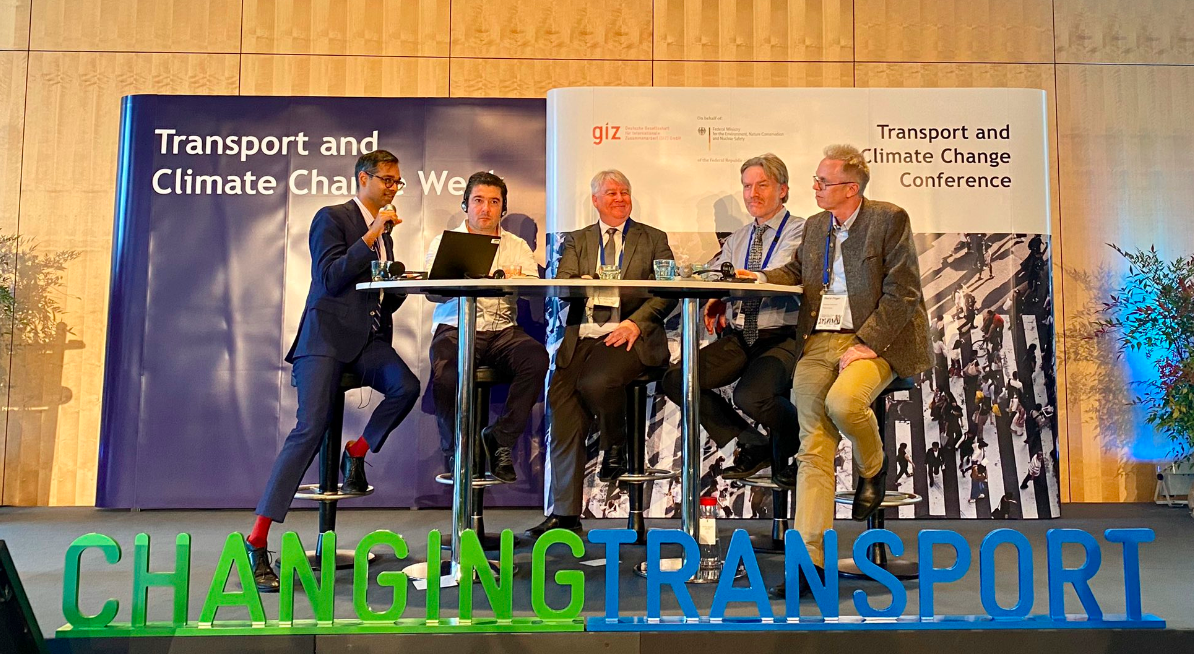Using climate finance to leapfrog climate actions in transport

Climate finance comprises the financial product deployed to achieve the Paris Agreement's and Sustainable Development Goals (SDGs) climate objectives. It aims at mitigating climate change impact by reducing Greenhouse Gas (GHG) emissions, reducing the vulnerability and increasing the resilience of human and ecological systems to climate change, and supporting the transition towards sustainable development and low-carbon economic growth.
A fast-changing product
Climate finance is rapidly moving from a niche product to a basic funding criteria. As early as 2012, MobiliseYourCity Implementing Partner Agence Française de Développement (AFD) committed to allocating at least 50% of its annual financing in foreign countries for projects with climate co-benefits. In 2017 they went further and committed the entire AFD Group to be 100% compatible with the Paris Agreement. Similarly, the Asian Development Bank (ADB) and the European Bank for Reconstruction and Development (EBRD), also MobiliseYourCity Partners, are also committed to increasing their financing of climate change projects.
Despite this positive trend, the investment need remains large - estimates for the need for mitigation actions in the Global South alone range between $140 billion to $175 billion per year by 2030. The overall annual MBD climate finance is expected to grow from $111 billion in 2018 to $175 billion in 2025 a more than 50 per cent increase from current levels - that represent a drop in the bucket.
Leapfrogging into future mobility
Climate finance is necessary to support countries avoid getting locked in unsuitable development pathways, especially in the transport sector. Leapfrogging in urban transport means to skip jump over the period of transport infrastructure built to encourage high rates of personal vehicle use to a mobility system designed with connecting people and places. Specifically, this requires denser cities where people can walk or cycle safely and comfortably to meet most of their needs. It also requires energy efficient public transport , maximize the potential of digital technology, and significantly improved vehicle and engine performance.
How MobiliseYourCity supports its partners leapfrog to sustainable transport
The MobiliseYourCity Partnership is supporting 47 cities and national governments around the world prepare Sustainable Urban Mobility Plans (SUMPs) and National Urban Mobility Policies and Investment Programs (NUMPs). In preparing the SUMPs and NUMPs, cities and countries identify and prepare projects that have a positive impact on climate by taking an avoid-shift-improve approach to transport. The Partnership helps quantify the projected climate benefits of implementing the SUMPs and NUMPs to strengthen the case for access to climate finance and links the projects to potential funders.
The positive impact of climate finance
The first 2 NUMPs and 7 SUMPs that have been completed by our members have prioritized and prepared a combined investments of €26 billion . In 2019, we mobilized €435 million for sustainable mobility projects, which will have positive climate benefits. Because they are committed to tackling the climate crisis while improving mobility for their citizens, MobiliseYourCity member cities and countries are benefiting from financiers making climate a basic funding criterion.
Working to reduce emissions has a real impact on people's quality of life. Six million additional people will gain access to public transport as a result of the projects identified in the 3 SUMPs approved in 2019 in Cameroon and Dominican Republic. Projections from the first SUMP that quantified the impact on road safety estimated a 33% reduction in traffic accident casualty. Another proof of the multiple positive impacts of sustainable mobility.
This post is based on the session ”Using Climate Finance to leapfrog Climate Actions in Transport” that took place at the Transport and Climate Week 2020 in Berlin.